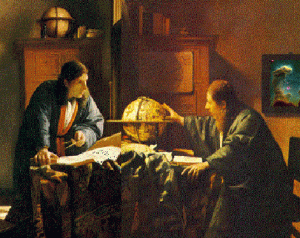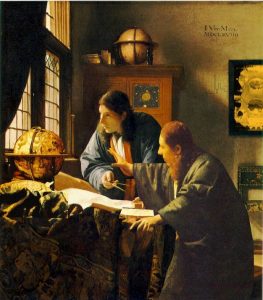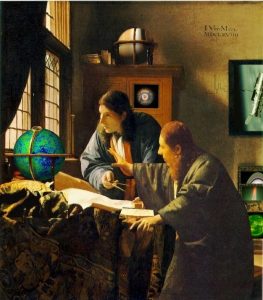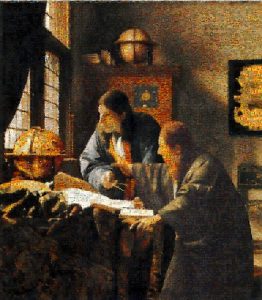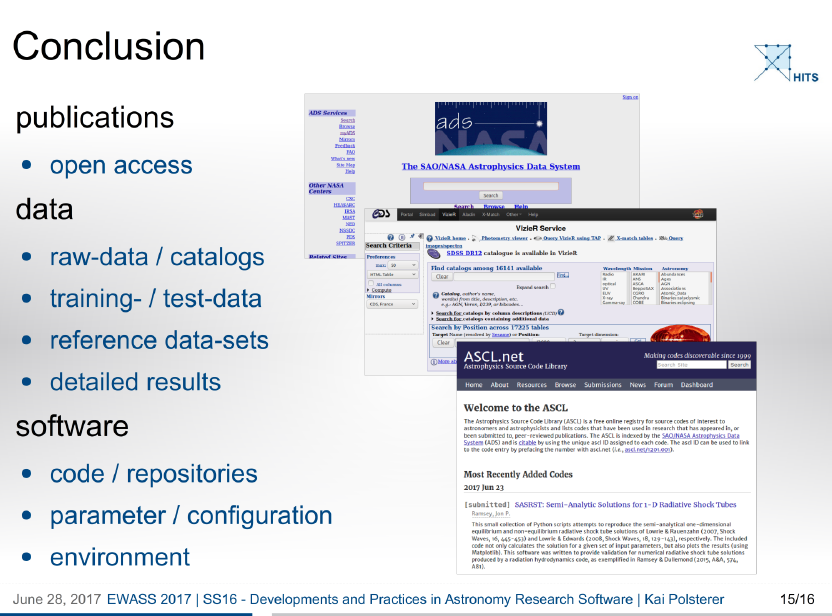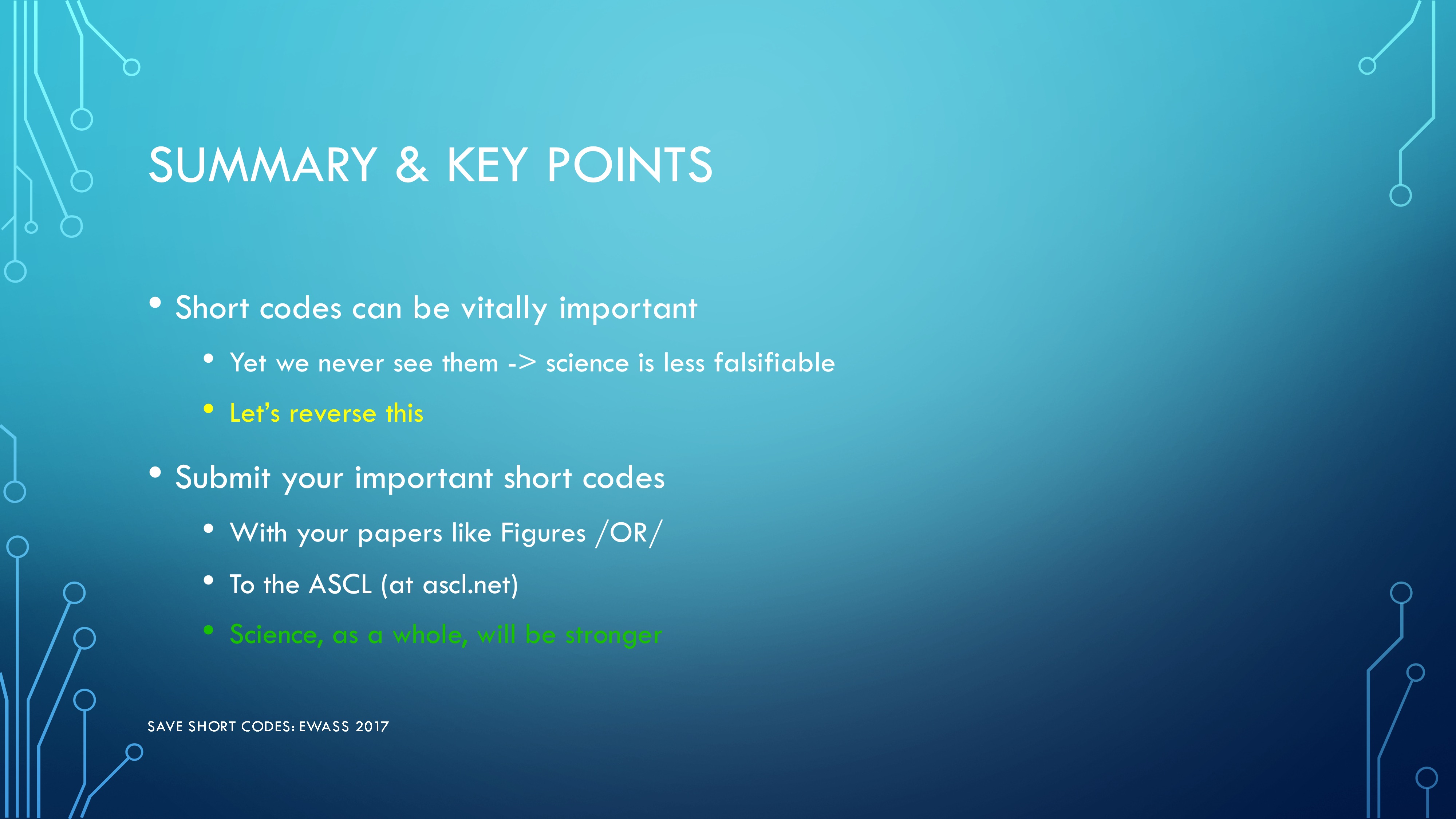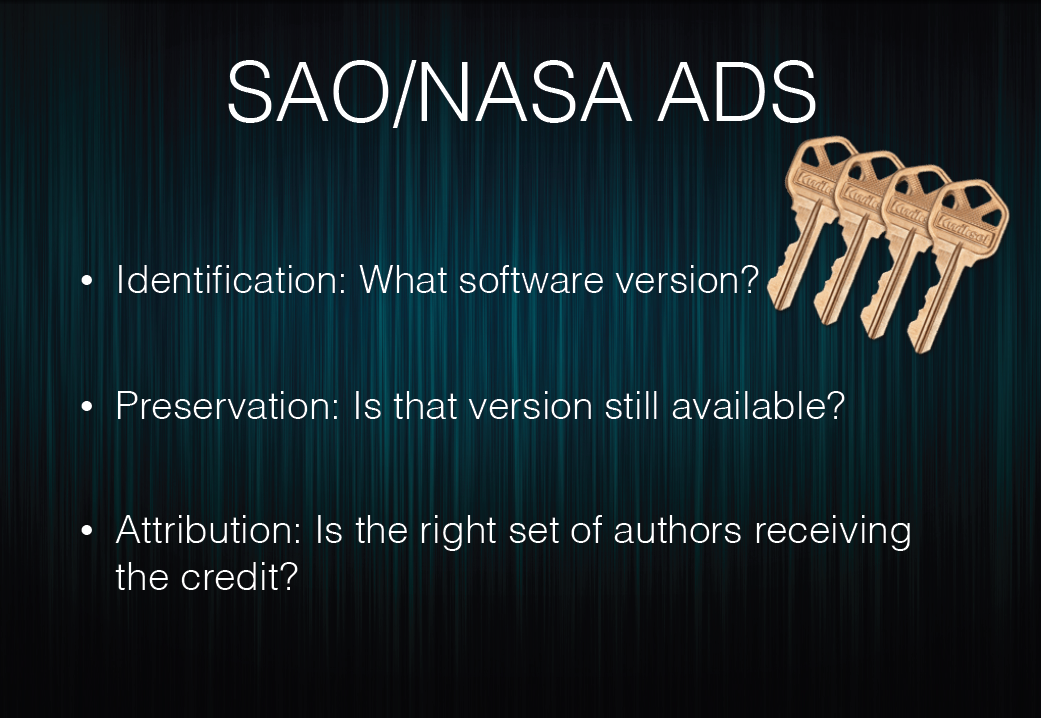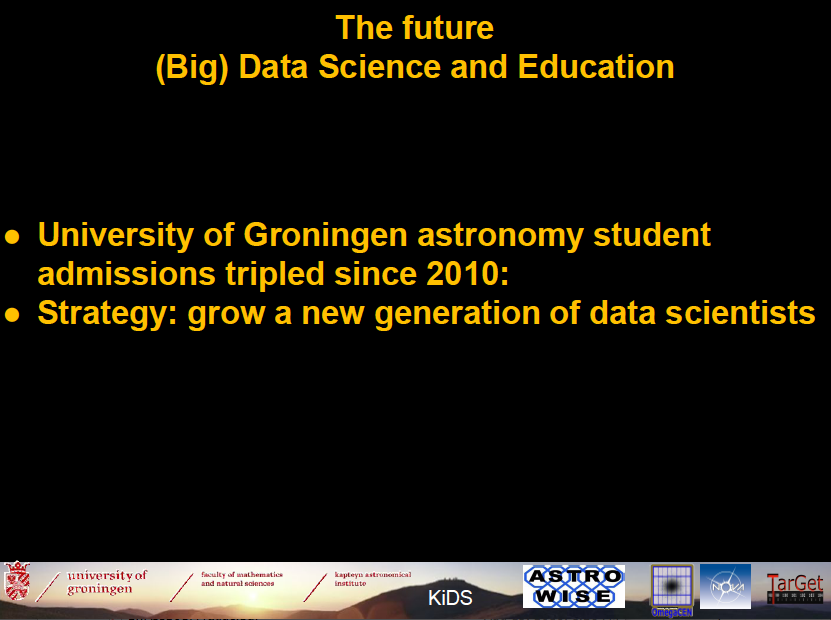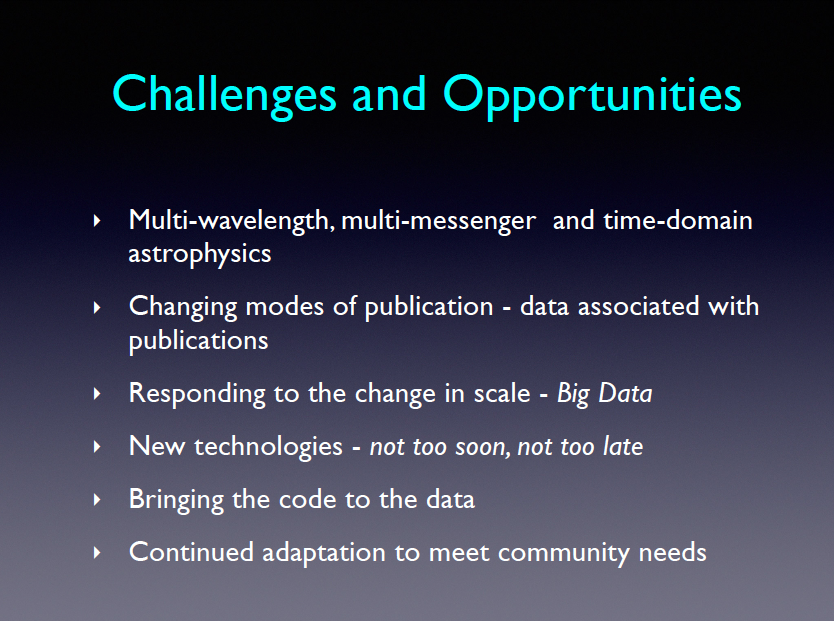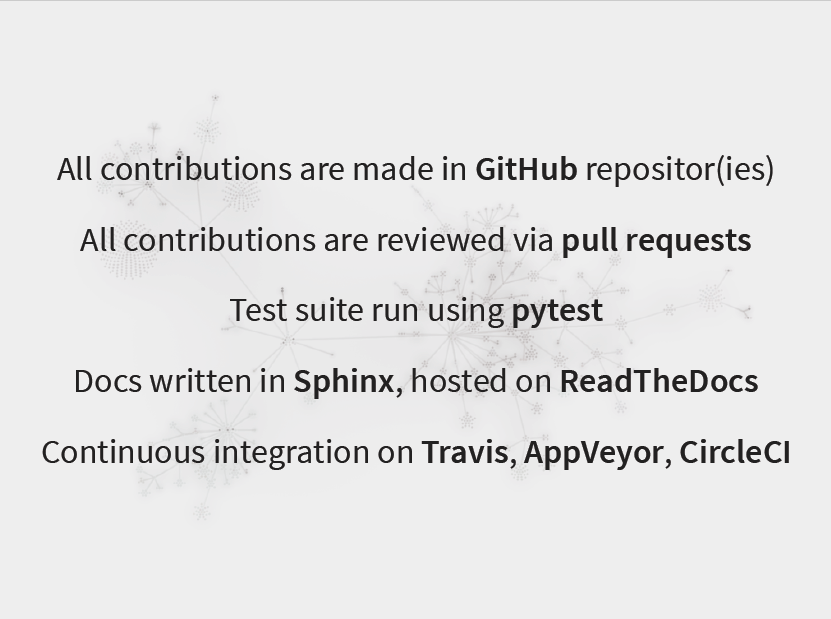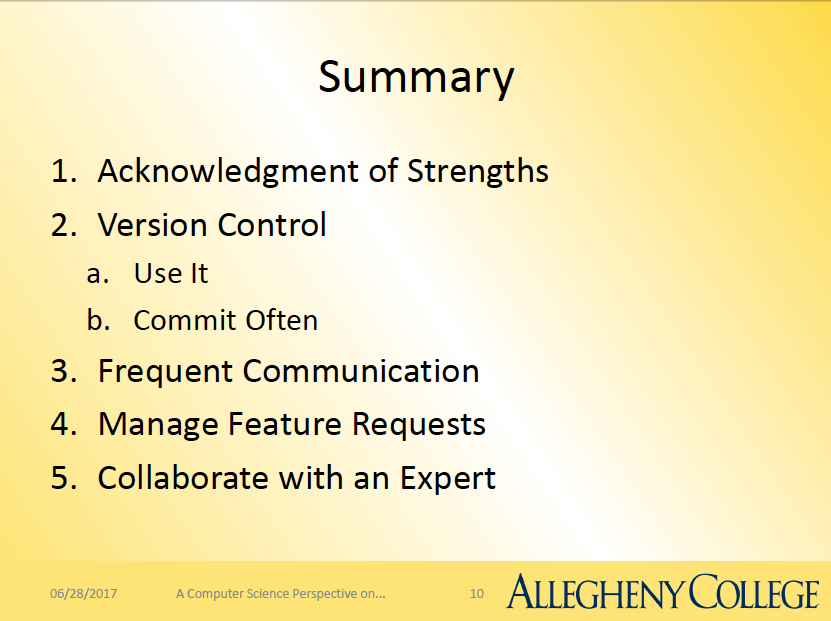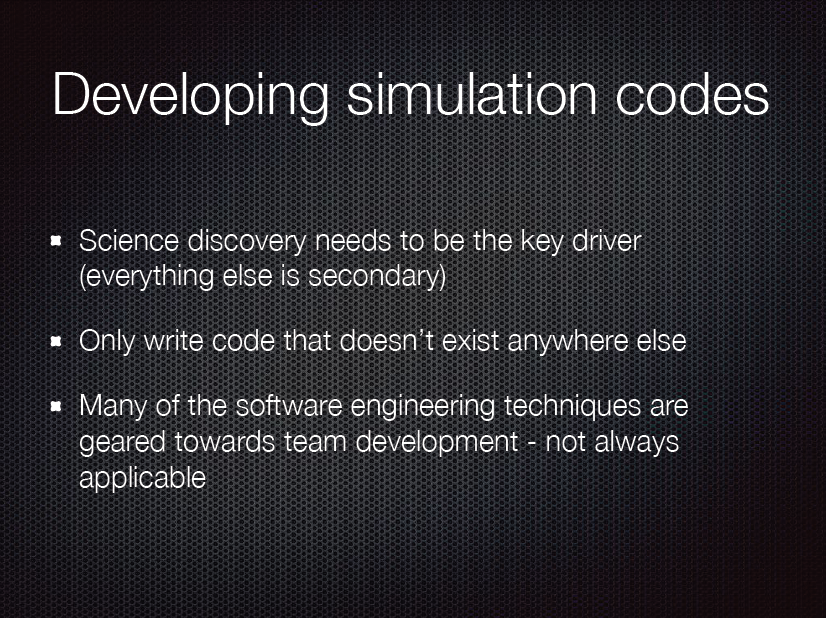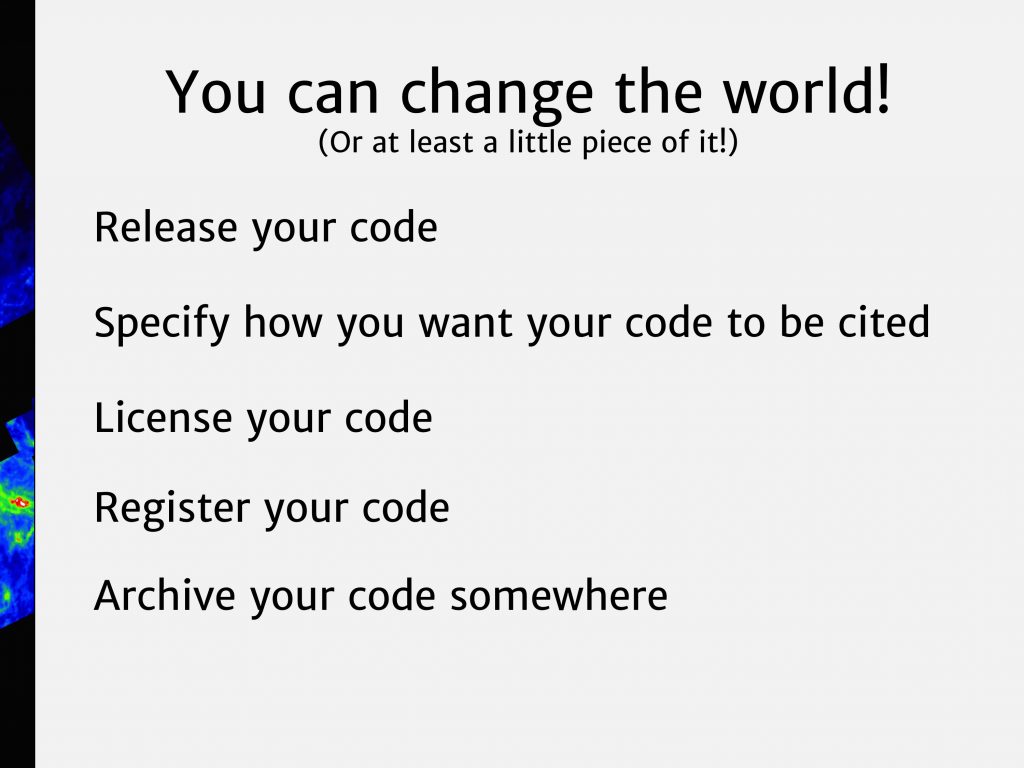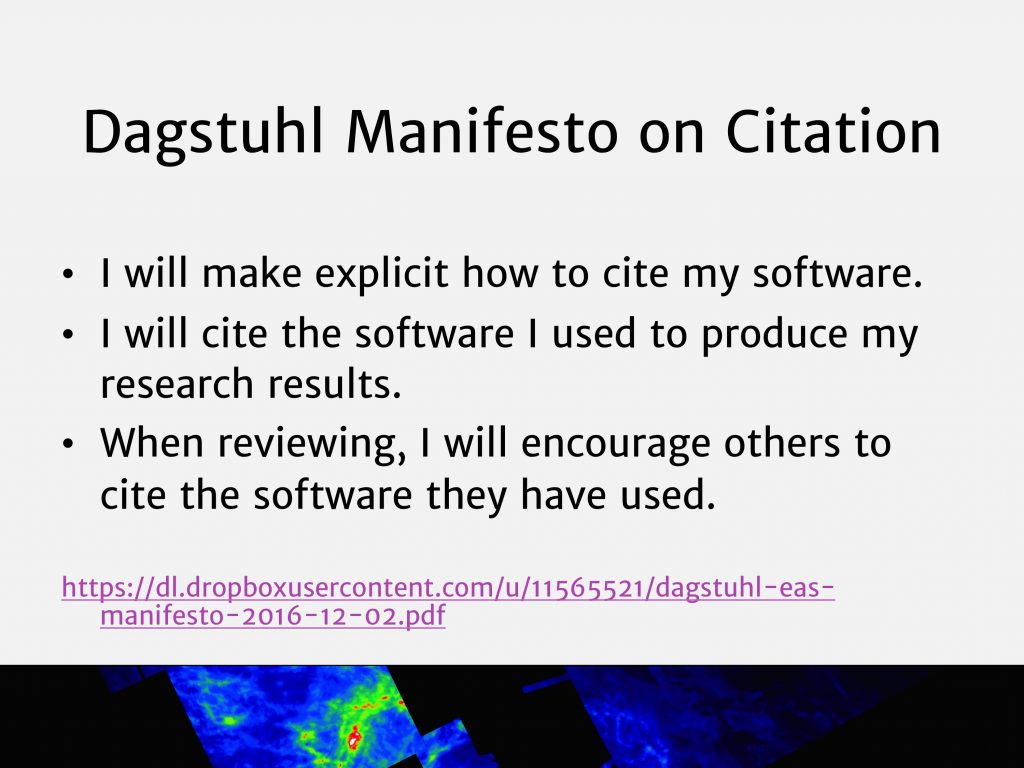The Big List o’ Software Stuff for the January AAS meeting is here; it appears software is taking over the world! if I missed anything, please let me know in the comments below. Thank you!
SUNDAY, 7 JANUARY 2018
Workshops
Introduction to Software Carpentry (Day 1), 8:00 AM – 5:30 PM; RiverView Ballroom 2
Hands-on Hierarchical Bayesian Modeling of Cosmic Populations, 9:30 AM – 4:30 PM; Potomac Ballroom 1
Using Python to Search NASA’s Astrophysics Archives, 10:00 AM – 11:30 AM; Potomac Ballroom 2
MONDAY, 8 JANUARY 2018
Workshops
Introduction to Software Carpentry (Day 2), 8:00 AM – 5:30 PM; RiverView Ballroom 2
Using Python and Astropy for Astronomical Data Analysis, 9:00 AM – 5:00 PM; RiverView Ballroom B
A Data Science Foundation & Roadmap for Astronomy Instructors, 9:00 AM – 6:00 PM; Potomac Ballroom 1
TUESDAY, 9 JANUARY 2018
Splinter meeting: Better Data Visualization and Exploration with GLUE, 3:00 PM – 5:00 PM; National Harbor 8 (Note corrected time!)
Poster presentations
Session 150. Computation, Data Handling, Image Analysis Poster Session (39 posters!)
Also:
157.02. Evolving R Coronae Borealis Stars with MESA
157.07. Modeling Protoplanetary Disks to Characterize the Evolution of their Structure
157.15. Case Study of Data Mining in Observational Astronomy: The Search for New OB Stars in the Small Magellanic Cloud
144.12. The evolution of a dead zone in a circumplanetary disk
144.17. Modeling a Large Heterogeneous Set of CIRS Spectra of Titan: The ν4 band of 12C2HD
111.02. Dynamical Studies of N-Body Gravity and Tidal Dissipation in the TRAPPIST-1 Star System
111.03. Phase Curve Analysis of Super-Earth 55 Cancri e
111.04. Statistical Analysis of Hubble/WFC3 Transit Spectroscopy of Extrasolar Planets
111.08. Theory and Simulation of Exoplanetary Atmospheric Haze: Giant Spectral Line Broadening
102.02. The Pan-STARRS pipeline and data products
102.03. Precision Photometry and Astrometry from Pan-STARRS
110.01. Resolving the Circumgalactic Medium in the NEPHTHYS Simulations
115.09. Hydrodynamic Modeling of the Deep Impact Mission into Comet Tempel 1
151.04. A Transdimensional Approach to Modeling the Cosmic X-ray Background
151.05. The VLITE Post-Processing Pipeline
151.07. OSIRIS-REx Asteroid Sample Return Mission Image Analysis
147.03. Impact of Fragtal Grains on Protoplanetary Disk Evolution
147.05. Determining Disk Parameters for the Classical Be Star 59 Cyg
147.06. Modeling Protoplanetary Disks
147.09. Characterizing Protoplanetary Disks in a Young Binary in Orion
147.14. Hydrodynamic Simulations of Protoplanetary Disks with GIZMO
153.06. A Search for Cosmic String Loops Using GADGET-2 Cosmological N-Body Simulator
148.04. 3D hydrodynamic simulations of tidal disruption of terrestrial planets around white dwarfs
148.08. BARTTest: Community-Standard Atmospheric Radiative-Transfer and Retrieval Tests
148.13. Modeled 3-D Biosignatures from the Stratospheres of Proxima Centauri b and M-dwarf Planets
148.14. The Exoplanet Characterization ToolKit (ExoCTK)
148.29. Every Cloud has a Silver Lining: Synthesizing Spectra for Exoplanets with Inhomogeneous Aerosol Coverage
149.22. HERA, Methods of Computational Optimization in search for Epoch of Reionization
149.31. A Phenomenological Model of Star Formation Efficiency in Dark Matter Halos
136.02. Simulations of star-forming molecular clouds: observational predictions
158.10. Simulations of Tidally Driven Formation of Binary Planet Systems
158.11. Simulations of Magnetic Flux Emergence in Cool, Low-Mass Stars: Toward Linking Dynamo Action with Starspots
158.16. The Ultracool Typing Kit – An Open-Source, Qualitative Spectral Typing GUI for L Dwarfs
146.01. Binary Model for the Heartbeat Star System KIC 4142768
145.05. Modeling and Analysis of CTIO 1.5m White Dwarf Spectra
Oral presentations
111.02. Dynamical Studies of N-Body Gravity and Tidal Dissipation in the TRAPPIST-1 Star System, 10:10 AM – 10:20 AM, National Harbor 11
111.03. Phase Curve Analysis of Super-Earth 55 Cancri e, 10:20 AM – 10:30 AM, National Harbor 11
111.04. Statistical Analysis of Hubble/WFC3 Transit Spectroscopy of Extrasolar Planets, 10:30 AM – 10:40 AM, National Harbor 11
111.08. Theory and Simulation of Exoplanetary Atmospheric Haze: Giant Spectral Line Broadening, 11:20 AM – 11:30 AM, National Harbor 11
102.02. The Pan-STARRS pipeline and data products, 10:00 AM – 11:30 AM, Potomac C
102.03. Precision Photometry and Astrometry from Pan-STARRS, 10:00 AM – 11:30 AM, Potomac C
110.01. Resolving the Circumgalactic Medium in the NEPHTHYS Simulations, 10:00 AM – 10:10 AM, National Harbor 10
115.06. The Deflector Selector: A Machine Learning Framework for Prioritizing Hazardous Object Deflection Technology Development, 10:50 AM – 11:00 AM, Potomac 1-2
115.09. Hydrodynamic Modeling of the Deep Impact Mission into Comet Tempel 1, 1:20 AM – 11:30 AM, Potomac 1-2
116.01. SVD/MCMC Data Analysis Pipeline for Global Redshifted 21-cm Spectrum Observations of the Cosmic Dawn and Dark Ages, 12:00 PM – 3:30 PM; Woodrow Wilson BCD
128.04. Dynamics as a ‘Red Flag’ in Exoplanetary Science, 2:40 PM – 2:50 PM, National Harbor 11
132.07. Time-Dependent Electron Acceleration in Pulsar Wind Termination Shocks: Application the 2011 April Crab Nebula Gamma-ray Flare, 3:20 PM – 3:30 PM, Potomac 3-4
WEDNESDAY, 10 JANUARY 2018
Special Session: Applied Statistical Methods in Astronomy: Gaussian Processes and Machine Learning
2:00 PM – 3:30 PM; National Harbor 2
Poster presentations
Session 239: Applied Statistical Methods in Astronomy: Gaussian Processes and Machine Learning Poster Session
Also:
257.09. Exploring the Internal Dynamics of Globular Clusters
257.11. GalMod: the last frontier of Galaxy population synthesis models
257.22. TYCHO: Simulating Exoplanets Within Stellar Clusters
244.09. The COBAIN (COntact Binary Atmospheres with INterpolation) Code for Radiative Transfer
244.22. Modeling the binary circumstellar medium of Type IIb/L/n supernova progenitors
244.23. Photometric Analysis and Modeling of Five Mass-Transferring Binary Systems
244.26. A Global Three-Dimensional Radiation Hydrodynamic Simulation of a Self-Gravitating Accretion Disk
238.05. The Chandra Source Catalog 2.0: Data Processing Pipelines
246.03. An accessible echelle pipeline and its application to a binary star
246.04. Building Better Planet Populations for EXOSIMS
246.16. Improvements to the Root Finding Algorithm in VBBinaryLensing
258.16. Epoch of Reionization : An Investigation of the Semi-Analytic 21CMMC Code
252.12. Using numerical simulations to study the ICM metallicity fields in clusters and groups
255.01. SkyPlotter: Displaying Source Candidates Near High-Energy Neutrino Events
255.02. A new relativistic model for tidal stream evolution during tidal disruption events
255.05. Modeling Ponderomotive Squeezed Light in Gravitational-Wave Laser Interferometers
255.17. Data Analysis Techniques for LIGO Detector Characterization
243.11. Applying a physical continuum model to describe the broadband X-ray spectra of accreting pulsars at high luminosity
237.03. New Algorithm Identifies Tidal Streams Oriented Along our Line-of-Sight
Oral presentations
Session 213: Computation, Data Science, and Image Analysis 10:00 AM – 11:30 AM; National Harbor 4 (7 presentations)
Also:
211.07. Bayesian Analysis of Hot Jupiter Radius Anomalies Points to Ohmic Dissipation, 11:10 AM – 11:20 AM, National Harbor 11
210.06. Figuring Out Gas in Galaxies In Enzo (FOGGIE): Resolving the Inner Circumgalactic Medium, 11:10 AM – 11:20 AM, National Harbor 10
229.03. Forward modelling techniques for spectra retrieval of circumstellar debris disks, 2:30 PM – 2:40 PM, Potomac 5-6
226.03. Cosmological Simulations with Molecular Astrochemistry: Water in the Early Universe, 2:30 PM – 2:40 PM, National Harbor 3
228.05. pyLIMA : The first open source microlensing modeling software, 2:50 PM – 3:00 PM, National Harbor 11
THURSDAY, 11 JANUARY 2018
Special Session: Astronomy Software Publishing: Community Roles and Services, 10:00 am – 11:30 am, National Harbor 2
Plenary Talk: Astro Data Science: The Next Generation, 11:40 AM – 12:30 PM; Potomac Ballroom AB
Poster presentations
350.01. Looking for Dust-Scattering Light Echoes
350.03. Studying Dust Scattering Halos with Galactic X-ray Binaries
350.05. Markov Chain Models for Stochastic Behavior in Resonance Overlap Regions
340.13. Simulating Supernovae Driven Outflows in Dwarf Galaxies
355.27. Stellar Atmospheric Modelling for the ACCESS Program
351.02. Calculating the n-point correlation function with general and efficient python code
348.12. A Comparison of Mixing in Stellar Evolution Codes Tycho and Geneva
362.08. What Time is Your Sunset? Accounting for Refraction in Sunrise/set Prediction Models
362.09. SpecTracer: A Python-Based Interactive Solution for Echelle Spectra Reduction
362.11. Generative Models in Deep Learning: Constraints for Galaxy Evolution
362.16. Statistical tools for analysis and modeling of cosmic populations and astronomical time series: CUDAHM and TSE
338.04. Simulating nanostorm heating in coronal loops using hydrodynamics and non-thermal particle evolution
338.06. Modeling Solar Atmospheric Phenomena with AtomDB and PyAtomDB
Oral presentations
334.01. Modeling the photo-polarimetric characteristics of brown dwarfs, 2:00 PM – 2:10 PM, Maryland 1-2
334.04. 3D Realistic Radiative Hydrodynamic Modeling of a Moderate-Mass Star: Effects of Rotation, 2:40 PM – 2:50 PM, Maryland 1-2
FRIDAY, 12 JANUARY 2018
Workshop: Hack Together Day, 10:00 am ‐ 7:00 pm, National Harbor 13 (Info and registration)
Special Session: Statistical, Mathematical and Computational Methods for Astronomy (ASTRO): SAMSI 2016-17, 10:00 am – 11:30 am, Grapevine 2
Poster presentations
434.08. Modeling the Effects of Asynchronous Rotation on Secondary Eclipse Timings in HW VIr Binaries
436.05. Real-time Automatic Search for Multi-wavelength Counterparts of DWF Transient
436.16. CosmoQuest Transient Tracker: Opensource Photometry & Astrometry software
437.04. Impact of Ice on Evolution of Protoplanetary Disks and Formation of Planetary Systems
438.02. Tests of Catastrophic Outlier Prediction in Empirical Photometric Redshift Estimation with Redshift Probability Distributions
438.04. Confronting Alternative Cosmological Models with the Highest-Redshift Type Ia Supernovae
439.09. TESS Data Processing and Quick-look Pipeline
439.10. PyKE3: data analysis tools for NASA’s Kepler, K2, and TESS missions
439.18. Open-source Software for Exoplanet Atmospheric Modeling
439.22. Gaussian Process Noise Modeling with RadVel: a Case Study of HD 3167
439.23. Developing Tighter Constraints on Exoplanet Biosignatures by Modeling Atmospheric Haze
440.12. The Effects of Accretion Disk Thickness on the Black Hole Reflection Spectrum
441.03. Large Scale Structure in CHILES using DisPerSE
444.13. Teaching Astronomy and Computation with Gaia: A New Curriculum for an Extra-curricular High School Program
447.12. The Data Calibration Pipeline for JWST/NIRSpec
448.02. Kinematics of Globular Cluster: new Perspectives of Energy Equipartition from N-body Simulations
448.05. Improved Membership Probability for Moving Groups: Bayesian and Machine Learning Approaches
449.10. Employing Machine-Learning Methods to Study Young Stellar Objects
453.09. PINT, A Modern Software Package for Pulsar Timing
428.03. Identifying Likely Disk-hosting M dwarfs with Disk Detective
426.07. Observing Galaxy Mergers in Simulations
426.08. A new 3-D View of Ionized Gas Conditions in Galaxies
424.01. Constraining Population Synthesis Models of Compact Binary Mergers using Supernova Observations
Oral presentations
405.04. Radiation Transport in Dynamic Spacetimes, 10:40 AM – 10:50 AM, Maryland C
412.02.D Illuminating the star clusters and satellite galaxies with multi-scale baryonic simulations, 10:10 AM – 10:30 AM, National Harbor 4
406.01. Phase-space Analysis in the Group and Cluster Environment: Introduction and Application, 10:00 AM – 10:10 AM, Maryland D
406.05. Gas Dynamics in the Fornax Cluster: Viscosity, turbulence, and sloshing, 11:00 AM – 11:10 AM, Maryland D
409.04D. A Modern Picture of Barred Galaxy Dynamics, 10:40 AM – 11:00 AM, National Harbor 10
408.03D. Multidimensional pair-instability supernova simulations and their multi-messenger signals, 10:20 AM – 10:40 AM, National Harbor 3
Also of likely interest is the oral presentation on “Big Data” Teen Astronomy Cafes at NOAO that will take place on Wednesday, 10 January from 10:10 AM – 10:20 AM in Maryland 1-2.
